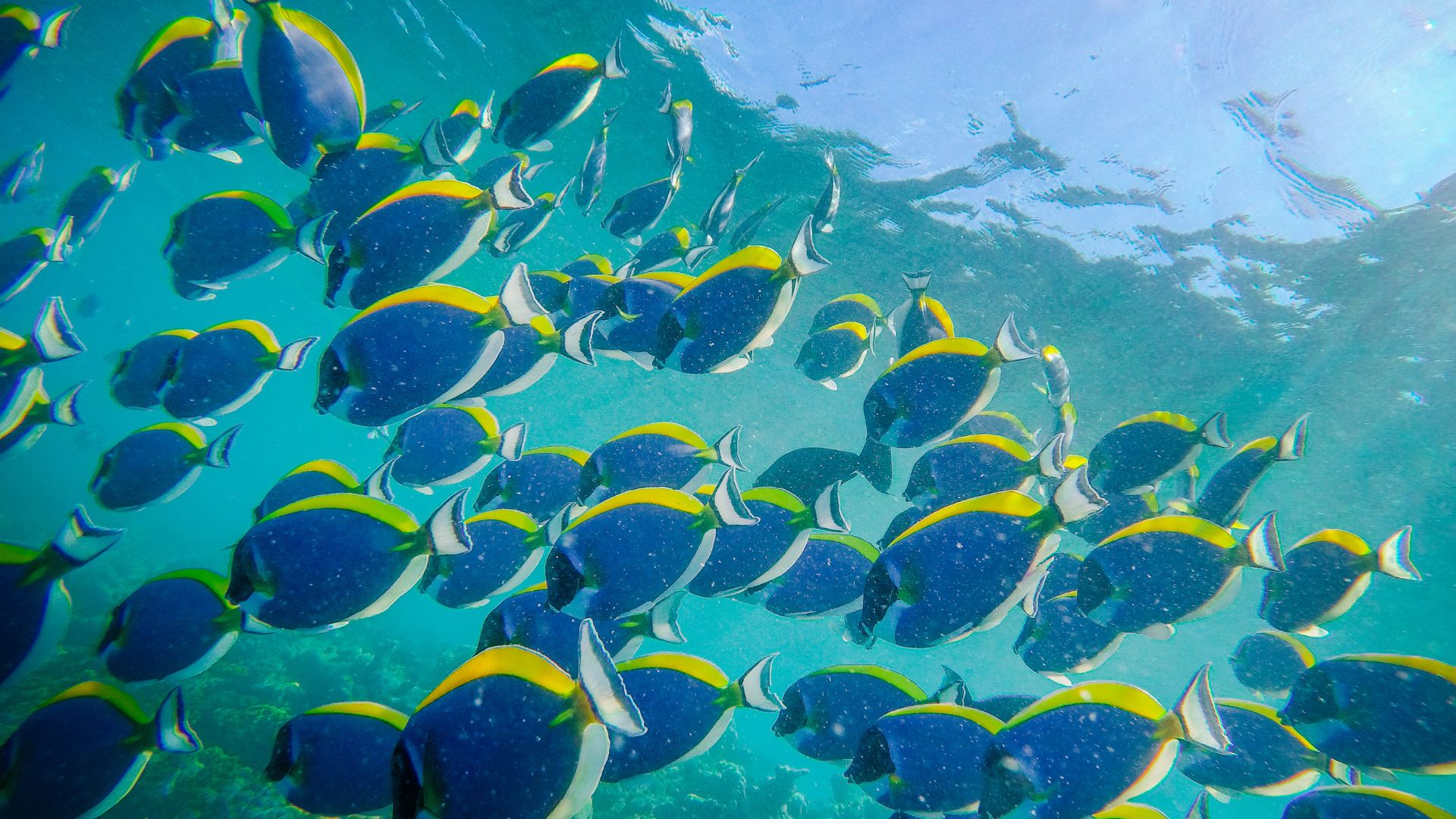Last Updated on August 20, 2023 by Afsar
Swimming in the ocean offers a refreshing and invigorating experience, a stark contrast to the confines of a swimming pool. The vast expanse, the gentle waves, and the salty air can truly rejuvenate the spirit. However, the ocean is as unpredictable as it is vast, and swimmers must adhere to certain guidelines to ensure their safety and the well-being of the marine environment. Here are ten rules every ocean swimmer should follow:
1. Always swim near a lifeguard station
Lifeguard stations are strategically positioned along beaches to offer swimmers an added layer of security. These professionals undergo rigorous training in recognizing potential hazards and executing timely rescues. Their expertise extends beyond just overseeing the swimmers; they are attuned to the ocean’s temperament, recognizing sudden current changes or spotting dangerous marine life. Furthermore, lifeguards often have equipment on hand – from buoyancy aids to first-aid kits – ensuring immediate emergency response. Swimming within the designated areas near these stations means a higher probability of prompt assistance in the rare event of distress. Essentially, a lifeguard station acts as a safety net, ensuring that recreational enjoyment doesn’t compromise personal safety.
2. Never swim alone
The age-old adage of the ‘buddy system’ holds immense value, especially in unpredictable environments like the ocean. When you swim with a companion, someone watches your back. If one person encounters trouble, the other can quickly raise the alarm or provide immediate assistance, greatly reducing the time between the onset of a problem and its resolution. Moreover, having a companion means sharing the experience, making memories, and ensuring that the beauty of the ocean doesn’t cloud one’s judgment. In a place where unexpected currents, changing tides, and marine life are factors, having an extra pair of eyes can make all the difference.
3. Always wear appropriate swimwear
The ocean isn’t just another swimming pool, and the attire you choose can significantly impact your experience. Appropriate swimwear, designed specifically for ocean activities, provides flexibility, ensures easy movement, and reduces the drag that can come from wearing unsuitable attire. Moreover, ocean-specific swimwear often incorporates materials that protect against harmful UV rays. On the other hand, street clothes and shoes become heavy when wet, restricting movement and posing a potential drowning hazard. They can also conceal dangerous marine life or get caught on submerged objects, creating a risky situation. The right swimwear acts as a shield, offering protection while maximizing comfort.
4. Stay close to the shore
The allure of the open ocean can be tempting. Vast and seemingly endless, its depths promise discovery and adventure. However, for swimmers, the farther from the shore, the higher the risk. Staying close to the shore ensures that one remains within a manageable depth, reducing the chance of encountering strong, unpredictable currents or riptides that are more prevalent in deeper waters. Moreover, in case of sudden changes in weather or physical discomfort, the proximity to the shore facilitates a swift exit from the water. It also ensures that lifeguards can easily spot and reach you. While the ocean’s depths hide myriad mysteries, recreational swimmers should prioritize safety, savoring the ocean’s beauty from the relative safety of shallower waters.
5. Use a shower and apply sunscreen
The ocean’s saline environment and sun exposure can be harsh on the skin. Rinsing off with a shower before and after a swim helps to remove contaminants that could harm marine life and clears off the salt, which can cause skin irritation. On the protective side, using sunscreen is paramount. The reflective nature of the water amplifies sun exposure, increasing the risk of sunburn. However, it’s essential to opt for reef-safe sunscreens. Traditional sunscreens often contain chemicals harmful to marine life, especially coral reefs. By using eco-friendly options, swimmers can protect their skin from harmful UV rays while ensuring they don’t contribute to the degradation of the marine ecosystem they enjoy.
6. Check the weather
The ocean, magnificent as it is, is highly susceptible to weather changes. What begins as a clear sunny day can quickly turn stormy, leading to rough seas. Before heading out, it’s imperative to consult weather forecasts, specifically for marine conditions. Factors such as wind speed and direction, tide timings, and potential storm warnings can greatly impact the ocean’s behavior. Sudden weather changes can lead to the emergence of strong currents, riptides, or even lightning threats if a storm is nearby. By staying informed and avoiding the water during adverse conditions, swimmers can ensure their experience remains both enjoyable and safe.
7. Be cautious of sharks
While most shark species are not a direct threat to humans, and shark attacks are statistically rare, it’s prudent to be aware of potential risks. Sharks are naturally curious and might be drawn to erratic movements or shiny objects. Thus, swimmers should avoid the water during feeding times, typically at dusk and dawn, and be wary of swimming near schools of fish. Wearing shiny jewelry can mimic the gleam of fish scales, potentially attracting unwanted attention. Knowledge of local shark species, their behavior, and areas where they are commonly sighted can also help avoid potential encounters. Remember, while sharks are majestic creatures, giving them their space and respecting their habitat is crucial.
8. Follow all posted signs and warnings
Beaches often have many information boards and signs indicating potential hazards, from strong currents and riptides to dangerous marine life like jellyfish. These signs are based on local knowledge and regular monitoring of conditions. Adhering to these warnings ensures you’re not inadvertently putting yourself in harm’s way. Ignoring them not only endangers oneself but also potentially strains the resources of lifeguards and rescue teams.

9. Protect and respect marine life
The ocean is a delicate, bustling ecosystem teeming with life, from the tiniest plankton to the majestic whales. As visitors to their home, it’s our duty to tread lightly. This means refraining from touching, teasing, or harassing marine animals. Disturbing marine life can stress the creatures, potentially leading to unpredictable reactions. Additionally, some marine creatures, like certain jellyfish, can threaten humans if provoked or touched. The best approach is to observe from a distance, marvel at nature’s wonders, and leave no trace of your visit.
10. Educate and inform
Being informed is the first step, but sharing that knowledge magnifies its impact. Talk to fellow beach-goers about the importance of these rules, share your insights on marine conservation, and encourage safe practices. Creating a community of informed ocean lovers ensures safety and promotes a culture of respect and admiration for our oceans. By sharing knowledge and experiences, we can collectively ensure that our interactions with the ocean are safe, respectful, and sustainable for generations to come.
With its vast expanse and captivating beauty, the ocean beckons many to its shores. It promises tranquility, adventure, and an unparalleled connection to nature. However, with this allure comes responsibility. Swimmers and beach-goers must be ever-vigilant, prioritizing their safety and the well-being of the delicate marine ecosystem they enter. From understanding the behavior of its inhabitants to acknowledging and adapting to its unpredictable moods, navigating the ocean requires a harmonious blend of respect, knowledge, and caution. By adhering to the abovementioned rules and fostering a community of informed and conscious ocean enthusiasts, we can ensure that our interactions with this magnificent entity are both rewarding and responsible. In doing so, we preserve the integrity of the ocean for future generations while ensuring that every splash, every dive, and every moment spent in its embrace is a memory cherished safely.

While the ocean may appear calm and serene during these times, avoiding swimming during dusk and dawn is advisable. This is not only due to limited visibility but also because these are typical feeding times for some marine animals, including sharks.
Reef-safe sunscreens typically avoid harmful chemicals like oxybenzone and octinoxate, which are known to damage coral reefs. Check the ingredients list, and look for labels or certifications indicating that the product is environmentally friendly or reef-safe.
Firstly, don’t panic. Avoid exhausting yourself by trying to swim directly against the current. Instead, swim parallel to the shore until you’re out of the current, and then head back to the beach.
No, out of the hundreds of shark species, only a few are considered a potential threat to humans. Most sharks are naturally wary of humans and avoid them. However, being cautious and informed about local marine life is always good.
Lifeguard stations are manned by professionals trained to handle ocean-related emergencies. They are familiar with the specific characteristics and potential hazards of their beach. Swimming near them ensures you’re in a supervised area with quicker assistance in case of emergencies.
It’s best to observe marine life from a distance without touching or disturbing them. Some creatures can be dangerous when threatened; our interactions might stress or harm them.
Street clothes and shoes are not designed for swimming. They can become heavy when wet, restricting movement and increasing the risk of drowning. They can also conceal or get entangled with marine life or underwater objects.
Always check local weather forecasts, specifically for marine conditions. Some beaches also post daily conditions on-site or online. Consult lifeguards or local authorities about the day’s swimming conditions when in doubt.

Afsar is an avid kayak blogger born near the coast. He has a passion for kayaking and started as a child. He has paddled in various conditions and locations and promotes responsible kayaking. Afsar’s blog is widely read, and they are a respected voice in the kayaking community, offering valuable content on kayaking trips, gear, tips, and tricks. Afsar collaborates with other bloggers and brands and continues to inspire others through their writing and social media.


Thanks for sharing these amazing swimming tips with us.